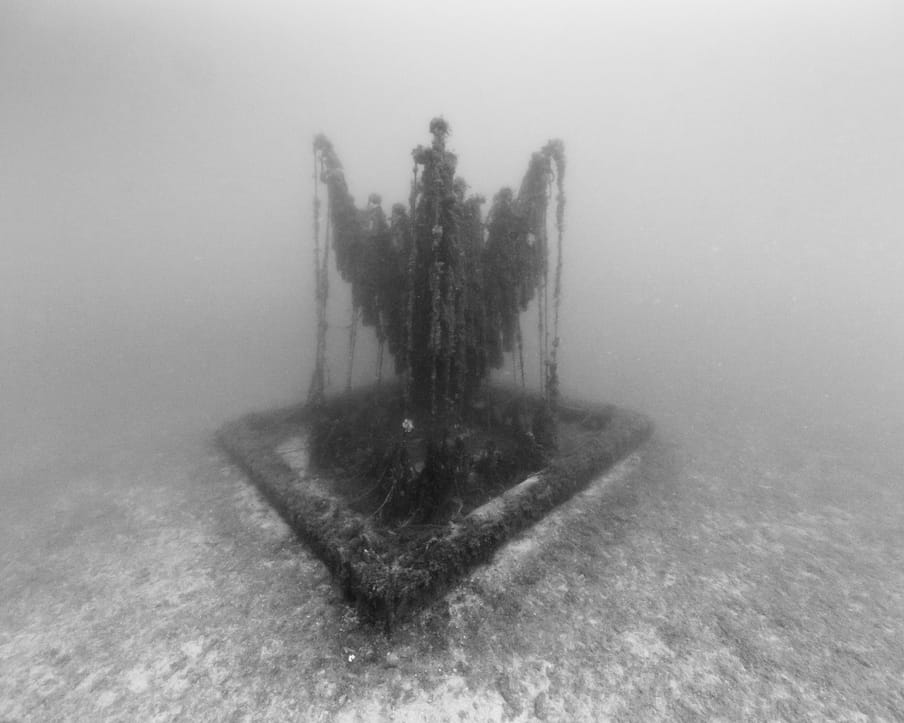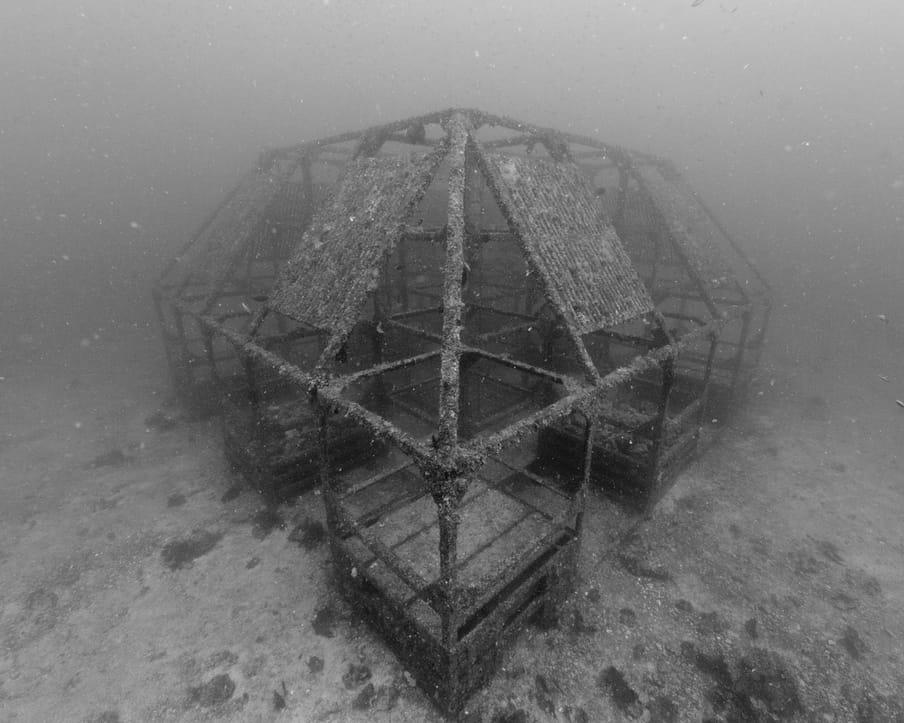Our world is better off now than at any point in human history, but at the same time things have never been worse.
It’s a contradiction that presents us with a seemingly unresolvable conundrum: the source of our progress has become the source of our downfall. Things are too good for us to change it all, yet too bad for us to leave anything as it is.
This is the great paradox of modern times.
Back to the “good” old days? Think again
Pessimism can come easy these days. We’re surrounded by depressing news stories, by nostalgic politicians who drum up support by evoking a time when their country was still “great”, by romantic Hollywood films that idealise a mythical past.
Sometimes it seems like the media, politics and the entertainment industry are all stuck in a time machine with only one setting: a kinder, gentler past when people still left their doors unlocked and enjoyed the simple things in life.
Also known as “La La Land”.
But you don’t need a time machine in order to feel grateful for living in the present day. By almost every measure, humanity is better off now than it’s ever been. We’re wealthier, healthier, safer, better informed and more prosperous than ever before.
Imagine life in the 18th century without television, film, or recorded music the next time you casually switch on Netflix, Fox Sports or Spotify.
Global life expectancy has more than doubled in the past century, rising to an all-time high of 72. More wealth has been created in the last four decades than in all of human history before then. Two centuries ago, 8 in 10 people still lived in extreme poverty, today it’s fewer than 1 in 10. War, disease and natural disasters now claim fewer lives than at any point in our history. In 1800, nearly half of all children died before the age of five, but today that figure has fallen to less than 4%. Two centuries ago, 88% of the world’s population was illiterate; now only 10%. An average smartphone user in China now has more information at their fingertips than the president of the United States did in 1990.
Daily life has grown considerably more enjoyable as well. In the 19th century, people (read: mostly women) spent an average of 58 hours per week on household chores – their 21st-century counterparts have whittled this down to fewer than 18 hours. Over this same period, hours spent working outside the home (read: mostly by men) have been slashed in half, down to around 40 hours per week. Not to mention the great strides we’ve made toward gender equality.
Of course, it’s tempting to view statistics like these with scepticism. After all, there’s still a staggering amount of suffering in the world. But anyone who sincerely believes that things were better back in the “good old days” is simply forgetting how dreary, difficult and monotonous life was for most people only four or five generations ago.
Just picture an average European’s diet during the Middle Ages – grains, porridge, carrots and onions all year round, few spices and definitely no fresh fruit – the next time you’re wandering the aisles of a modern supermarket. Imagine life in the 18th century without television, film, or recorded music the next time you casually switch on Netflix, Fox Sports or Spotify. Consider that little over a century ago, most people’s homes weren’t even hooked up to a sewerage system and you’ll never look at an ordinary toilet the same way again.

Unfortunately, the opposite is just as true
Paradoxically, while all of the above is undeniably true, it’s equally true that our world is worse off than ever before. Humankind is facing problems on a scale unlike anything we’ve ever seen.
Global warming is the most widely known – and most pressing – example. Since the beginning of the Industrial Revolution in 1750, we’ve extracted and burned hundreds of millions of years’ worth of stored energy in the form of oil, gas and coal, releasing more than 2 trillion tons of CO₂ into the atmosphere in the process. Though the consequences are mind blowing in their complexity, the problem itself is actually quite simple: the overabundance of CO₂ in our atmosphere is trapping the sun’s heat, raising the average temperature on earth enough to disrupt entire ecosystems.
If we continue on our current path, parts of our planet will become uninhabitable due to extreme heat. Climate migration will increase. Food and water shortages will become more frequent. Hurricanes and floods will claim more and more victims. Cities like Singapore and New York could end up largely underwater. Many non-human species will face extinction. To say nothing of the political tensions these developments will cause. Opposing camps are already facing off in protest, even though the worst is still to come.
The owners of half the world’s assets would fit into a single classroom.
The climate crisis goes hand-in-hand with another global problem: socioeconomic inequality on an unprecedented scale. The poorest half of the world’s population is only responsible for 14% of global CO₂ emissions. The entire continent of Africa, home to 1.2 billion people, generates a mere 4% of CO₂ emissions. The world’s richest 10% are responsible for fully half of all emissions.
Yet the devastating consequences of global warming will be felt in exactly the opposite direction: the world’s most socially and economically vulnerable will be most severely affected by drought, shortages, heat waves, rising sea levels and forced migration.
This extreme disconnect between those most responsible for climate change and those most affected by it reveals the flip side to the progress we’ve made over the past two centuries: while humanity as a whole is better off than ever before, the gains have been exceptionally unevenly distributed. Even though income inequality has fallen slightly in recent years, largely as a result of sharply rising incomes in China and India, wealth within countries has grown more and more unequally divided.
To understand just how absurd this wealth gap really is, consider the following statistic: the world’s 26 richest people own as much capital as the poorest 3.8 billion humans combined. The owners of half the world’s assets would fit into a single classroom.

Fossil capitalism, the source of good and evil
It’s no coincidence that climate and wealth are so closely linked, as they essentially share a common origin: fossil capitalism. Fossil fuels are the source of humanity’s extraordinary progress over the past two centuries, but also the source of the extraordinary problems facing us today.
Virtually everything that makes modern life so much better than it used to be – dramatic increases in life expectancy, health, safety, mobility, and luxury – was made possible by fossil fuel supplies that became available in the mid-18th century. The discovery of oil, coal and gas accelerated human development like nothing has before or since.
At the same time, this fossil fuel-based system also gave rise to the very issues threatening our modern way of life – climate change, loss of biodiversity, growing inequality. Crucially, these issues are not just unfortunate collateral damage but are actually written into fossil capitalism’s DNA – it has been so wildly successful precisely because of the exploitation of people, colonies, and our planet’s natural resources. It’s known as “extraction capitalism” for a reason: its very existence depends on exhausting people and planet.
The blessing has proven to be a curse. The price of our progress will be paid.
Which brings us to the great irony of our modern paradox: in order to preserve the fruits of humanity’s incredible growth, we have to leave it all behind. In order to keep moving forward, we have to go back to the drawing board. The engine that drives our civilisation must be completely disassembled and replaced with a new model.

The world’s first involuntary energy transition
That engine is, of course, our energy system. It won’t be the first time that humanity has switched to a new primary source of energy. We’ve done it before – three times, to be exact. And each time, the transition has completely transformed our society and way of life.
The first revolution came when we switched from wood, peat, and human muscle power to wood, peat, and animal power. This spelled the end of our nomadic hunter-gatherer existence and paved the way for the development of agriculture, private ownership and the first permanent settlements. The second revolution began with the transition to steam and coal, quickly followed by electricity, which ushered in an age of industrialisation, urbanisation and mass production. The third revolution followed soon after with the switch to oil and gas, giving rise to globalisation and our modern service-based economy.
In light of these revolutions, it is hardly an exaggeration to say that a new transition – this time, to renewable energy sources – will change everything. History has shown us that nothing plays a greater role in shaping human society than the energy sources on which it is built. British archaeologist Ian Morris describes this phenomenon as the “Great Chain of Energy”.
However, there is one crucial difference between previous energy revolutions and our current efforts to switch to sustainable sources: this time, it’s mostly involuntary.
We have no choice but to switch to sustainable energy – whether or not it’s more cost effective.
Prior transitions – from muscle power to animal power, to steam and electricity, to oil and gas – were largely sparked by new discoveries and spurred on by human ingenuity. These transitions and the resulting transformations were not imposed on us from the outside, but were a natural response to the new energy sources’ unmistakable practical and economic advantages. Of course, these so-called “voluntary” transitions actually involved a great deal of violent coercion in the form of slavery and exploitation. But the transitions themselves were not forced upon us by external factors.
And this is precisely what sets our current transition apart: we have no choice but to switch to sustainable energy – whether or not it’s more cost effective. Fortunately, sustainable energy is actually a better alternative to fossil fuels in many cases – particularly if we factor in the hidden costs of fossil fuels, such as pollution, the concentration of power, and socioeconomic inequality. But as things currently stand, sustainable technology isn’t yet ready to serve as the backbone for our modern society.
Take, for example, steel, cement, fertiliser and plastic – four key building blocks for our current way of life. We depend greatly on these materials for construction, agriculture and manufacturing, but they cannot yet be made affordably or on a large scale without coal, oil and/or gas. The same is true for two vital forms of mobility and transport: air travel and container shipping. Neither airplanes nor container ships can currently be powered without fossil fuels. This is a huge problem, as they play a central role in our global economy. In a sustainable world powered only by solar and wind energy, vast swathes of our planet would, economically speaking, become too distant to reach.
In short, the current energy transition is not a voluntary move towards a better alternative, but an imperative that has been forced upon us by the inherent unsustainability of our current energy system. As American philosopher Noam Chomsky so aptly put it, fossil capitalism can only persist “as long as it’s possible to pretend that the destructive forces that humans create are limited: that the world is an infinite resource, and that the world is an infinite garbage can.”
The end of that illusion is in sight right now.

Revolution in a time of peace and prosperity
All things considered, they point to some pretty depressing conclusions. We have no choice but to abandon the greatest source of progress humanity has ever known. Alternative energy sources are better in some ways, but still woefully inadequate in others. And the people who bear the greatest responsibility for the mess we’re in are also the ones who benefit most from our current system – while those who are most severely affected are the least able to enact change.
To make it even worse, it still remains to be seen whether the changes we need to make are even compatible with what we seek to protect: life in a free, democratic society.
Democracy is designed to prevent such an abrupt overthrow of the status quo.
We’re under enormous pressure to transition to a zero-carbon economy as quickly as possible. If we intend to keep global warming within manageable limits, we must reduce emissions to zero within the next 30 years. To get a sense of just how fast that is, consider the incubation periods of oil, coal and gas: it took these three energy sources 60 years to grow from 5% of our energy supply to their respective highs of 50%, 40% and 25%. If sustainable energy were to follow the same pattern, then solar, wind and biomass would not be our dominant energy sources until 2079. Which is to say: 30 years too late. And remember, we need sustainable energy to not only become the dominant source but to cover all of our energy needs.
Add to that the existing – and likely growing – resistance to this transition and the lingering skepticism about climate change, and it becomes clear: democracy based on participation and popular support is not the quickest way to achieve a social transformation of this magnitude. On the contrary, democracy is designed to prevent such an abrupt overthrow of the status quo. As correspondent Rutger Bregman recently observed, rapid, far-reaching changes to the fabric of society have usually taken place during wartime.
It’s hard to remain optimistic in the face of facts like these. In fact, it’s enough to make anyone feel cynical, even powerless. No wonder, then, that we’re surrounded by cynicism everywhere we turn – around the water cooler, at the kitchen table, and on TV and radio talk shows. “I’ve thought about going vegetarian, but if everyone else keeps...” “What’s the point of investing in solar and wind energy when China is still...” “Climate protests are all well and good, but nothing will change until we all...”

Cause for optimism: humanity’s knack for cooperation
Despite all this, there are good reasons to believe that humanity is capable of meeting the challenges facing us. Reasons that are so self-evident that we struggle to even see them. Reasons that cause us to wildly underestimate our individual power and our collective inventiveness. Reasons that get to the heart of human nature and the reason we have come to dominate the planet in the first place.
In the coming months, I want to dig a bit deeper into these fundamental reasons for optimism. Not to tell you “relax, everything will be fine” of course – that would be a lie.
Instead, I intend to show that our collective cynicism is based on a number of stubborn myths and misconceptions. Daily exposure to these myths in the news has caused us to accept them as gospel truth: things like how we’re too divided to come up with a unified solution, or how true change is only possible if everyone is on board.
All that we know, do and make is a joint effort.
In an earlier essay, I wrote about one of the most important reasons for hope – one that I dubbed an “everyday miracle”: humanity’s unrivalled ability to cooperate. Of course, no species truly operates in complete isolation, but humankind is unique in the extent to which we cooperate with each other. We work together on such a massive scale that it’s difficult for us to even observe it. The web that connects us is far too vast to be seen with the naked eye. It’s such a unique part of what it means to be human that you could make a case for renaming us homo cooperans – the “cooperative species”.
American economist Leonard Read famously illustrated the extent of human cooperation in the 1950s by asking a seemingly simple question: how many people does it take to make a pencil?
The answer: hundreds of millions.
Hundreds of millions of people? For a bit of graphite and some wood? You bet. Graphite has to be mined, which requires steel, which is made in steel mills, which run on electricity, which is generated using oil and gas, which has to be transported, which requires infrastructure.
And so on, and so forth.
This list is incredibly long – almost infinite, even. Without the invention of the wheel, there wouldn’t be any trucks to deliver the pencils. And if the plough hadn’t been invented, the truck drivers wouldn’t have a packed lunch to eat. To a certain extent, everything we do is connected to everything else: we don’t just have seven colleagues, or even seventy, but seven billion.
While Leonard Read used the example of the pencil to advocate a libertarian worldview in which everything could be left to the “free market”, that’s not what I’m getting at here. On the contrary, I’d argue that the idea that “the market” can solve everything is a big part of what got us into this mess in the first place.
But the deeper philosophical point he makes in his thought experiment is still valid: all that we know, do and make is a joint effort. Nothing you see around you – from the pencil you write with to the city you live in – was created by a single person working in isolation. Instead, our society is the result of literally thousands of years of shared knowledge and endless production chains.

Seven billion heads are better than one
This simple fact reveals a fundamental truth about human existence: our society is more than the sum of its parts. Human knowledge, skills and achievements are not simply cumulative, but are subject to an incredible multiplier effect. Knowledge is peculiar in that it grows when it’s shared (as does love, as the romantics would likely point out). And luckily, we humans are ridiculously good at sharing.
According to Israeli philosopher Yuval Noah Harari, our ability to cooperate on a large scale is the main reason why humans have come to dominate the planet so completely. It’s why we visit our evolutionary ancestors at the zoo instead of the other way around.
Thanks to humanity’s knack for collaboration, we’re not only the most dominant species on earth, but also our own worst enemy.
Not only do we humans work together instinctively, we’re also the only species that forms cooperative bonds that extend far beyond our immediate surroundings and include so many individuals. From businesses with thousands of employees to countries with hundreds of millions of inhabitants, from clubs with tens of thousands of members to religions with billions of followers. Partnerships like these allow our species to harness a collective problem-solving ability that far exceeds the knowledge, talent, and creativity of any one individual.
Critics will rightly point out that it is precisely this ability that makes humankind so destructive to our environment. They have a point. Chimpanzees may not have a clue how to make smartphones, but at least they’ve managed to avoid establishing a fossil fuel-based economic system that threatens their own habitat with extinction, unlike their hairless cousins.
Our collective ability to control our environment has seemingly lifted us up and out of the food chain, but it has also made us the greatest threat to our own survival. Thanks to humanity’s knack for collaboration, we’re not only the most dominant species on earth, but also our own worst enemy.
And yet collaboration remains the key to our success going forward: as a species, we are capable of making enormous, far-reaching changes. Like forging a climate agreement between 195 countries. Or passing an EU directive on household appliances that will prevent ten times more carbon emissions than the entire Dutch Climate Agreement. Or investing €30 billion as a company in designing a revolutionary new electric car.
It’s not surprising that climate change leaves us, as individuals, feeling powerless. A problem of this magnitude is the result of such a complex web of interactions that is far too complex for any one person to fully grasp – which means that the solutions must be, too. Quite literally, we can’t visualise what an effective solution would look like.
But then we can take heart from this fundamental truth about human nature: together we can.
This article is also published on De Correspondent, and was translated from Dutch by Megan Hershey.
 Artificial Reefs
After the second world war, human kind dreamt big. We tried to conquer space. We dreamt about living under the sea. Rockets were sent to the moon and utopian projects of cities built on the seabed – a real life Atlantis! – shot up like mushrooms at several underwater locations. But our imagination didn’t stop at human cities. From the ‘50’s onwards we designed complete underwater cities, not for humans, but for the local flora and fauna. These days, there are around 20,000 underwater ‘cities’ worldwide were you can find these so-called ‘productive structures’. They’re built anywhere from 10 to 80 metres deep and in some cases, reach a height of 35 metres! The French artist Nicolas Floc’h visited these cities, more commonly known as artificial reefs. In his introduction of the work he states that these reefs are “...not a case of nature reclaiming its rights after the passage of mankind, but of man building for nature and therefore no longer in opposition to nature. The artificial reef becomes a symbol of a possible transition.” (Isabelle van Hemert, Image Editor)
Artificial Reefs
After the second world war, human kind dreamt big. We tried to conquer space. We dreamt about living under the sea. Rockets were sent to the moon and utopian projects of cities built on the seabed – a real life Atlantis! – shot up like mushrooms at several underwater locations. But our imagination didn’t stop at human cities. From the ‘50’s onwards we designed complete underwater cities, not for humans, but for the local flora and fauna. These days, there are around 20,000 underwater ‘cities’ worldwide were you can find these so-called ‘productive structures’. They’re built anywhere from 10 to 80 metres deep and in some cases, reach a height of 35 metres! The French artist Nicolas Floc’h visited these cities, more commonly known as artificial reefs. In his introduction of the work he states that these reefs are “...not a case of nature reclaiming its rights after the passage of mankind, but of man building for nature and therefore no longer in opposition to nature. The artificial reef becomes a symbol of a possible transition.” (Isabelle van Hemert, Image Editor)


